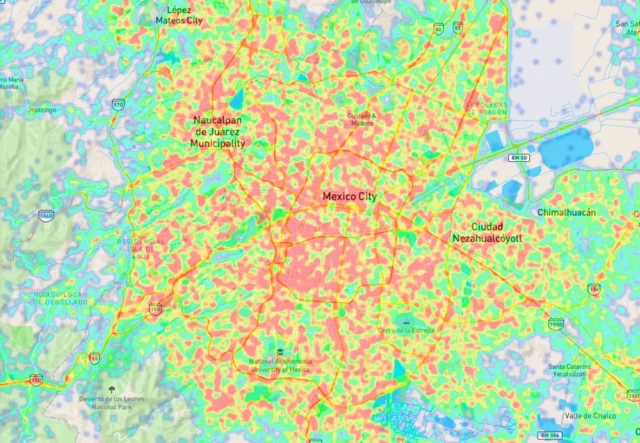In the digital landscape, understanding how users interact with your website is crucial for improving user experience and driving conversions. One powerful tool that provides invaluable insights into user behavior is heatmaps. By visually representing user interactions, heatmaps can help you optimize your website effectively. In this blog, we’ll explore the benefits of using heatmaps for website optimization and how they can enhance your overall digital strategy.

1. Visualizing User Behavior
Heatmaps offer a visual representation of user interactions on your website, highlighting areas of engagement and attention.
- Color-Coded Insights: Heatmaps use colors to represent different levels of user interaction, with warmer colors indicating high engagement and cooler colors showing less interaction. This allows you to quickly identify which sections of your site attract the most attention.
- Understanding Scroll Depth: Scroll heatmaps reveal how far users scroll down your pages, helping you determine if critical content is placed within their view. You can identify whether visitors are engaging with your content or if important information is being overlooked.
2. Identifying UX Issues
By analyzing heatmaps, you can pinpoint usability issues that may hinder user experience.
- Detecting Confusion: If users are clicking on areas that aren’t clickable (like images or headers), it may indicate confusion. This feedback can guide you in making necessary adjustments to your design or layout.
- Assessing Navigation Paths: Heatmaps help you understand how users navigate through your site. If users seem to struggle to find essential pages, it may be time to rethink your navigation structure.
3. Improving Conversion Rates
One of the primary goals of website optimization is to enhance conversion rates, and heatmaps can play a vital role in this process.
- Optimizing Call-to-Actions (CTAs): By analyzing heatmaps, you can see which CTAs attract the most clicks. This information can guide you in repositioning or redesigning CTAs to increase engagement and drive conversions.
- Testing Layout Changes: Heatmaps allow you to experiment with different layouts and content placements. By monitoring user behavior after making changes, you can determine what layout drives better performance.
4. Informing Content Strategy
Heatmaps can provide insights into how users interact with your content, helping you tailor your content strategy accordingly.
- Identifying Popular Content: Understanding which sections of your pages receive the most attention can help you identify popular topics. This information can guide your content creation efforts, allowing you to focus on what resonates with your audience.
- Optimizing Content Length: By analyzing where users tend to drop off, you can gauge if your content is too long or not engaging enough. Adjusting content length based on user behavior can enhance overall engagement.
5. Enhancing Mobile Experience
With the rise of mobile browsing, optimizing the mobile experience is more critical than ever. Heatmaps can help you understand how users interact with your site on mobile devices.
- Understanding Touch Points: Touch heatmaps display where users are tapping on their screens. This can help you optimize button sizes, placement, and the overall layout for better usability on mobile devices.
- Identifying Mobile-Specific Issues: By comparing desktop and mobile heatmaps, you can identify discrepancies in user behavior and address mobile-specific issues to enhance the mobile experience.
6. Facilitating A/B Testing
Heatmaps can enhance your A/B testing efforts by providing visual data to support your findings.
- Analyzing Variants: When testing different versions of a page, heatmaps allow you to see how user interactions vary between the versions. This visual data can help you choose the winning variant based on user engagement.
- Identifying Effective Elements: Heatmaps can reveal which design elements lead to better user interactions, providing insights into what works best for your audience.
7. Guiding Future Design Decisions
The insights gained from heatmap analysis can inform your future design decisions and overall website strategy.
- Data-Driven Design: By relying on user behavior data, you can make informed design choices that enhance user experience and optimize your website for better performance.
- Continuous Improvement: Heatmaps allow for ongoing analysis, ensuring that your website evolves with user preferences and behaviors over time.
Conclusion
Using heatmaps for website optimization is a powerful strategy that provides valuable insights into user behavior, identifies UX issues, improves conversion rates, and informs your content strategy. By visualizing how users interact with your website, heatmaps empower you to make data-driven decisions that enhance user experience and drive better business outcomes.


No responses yet